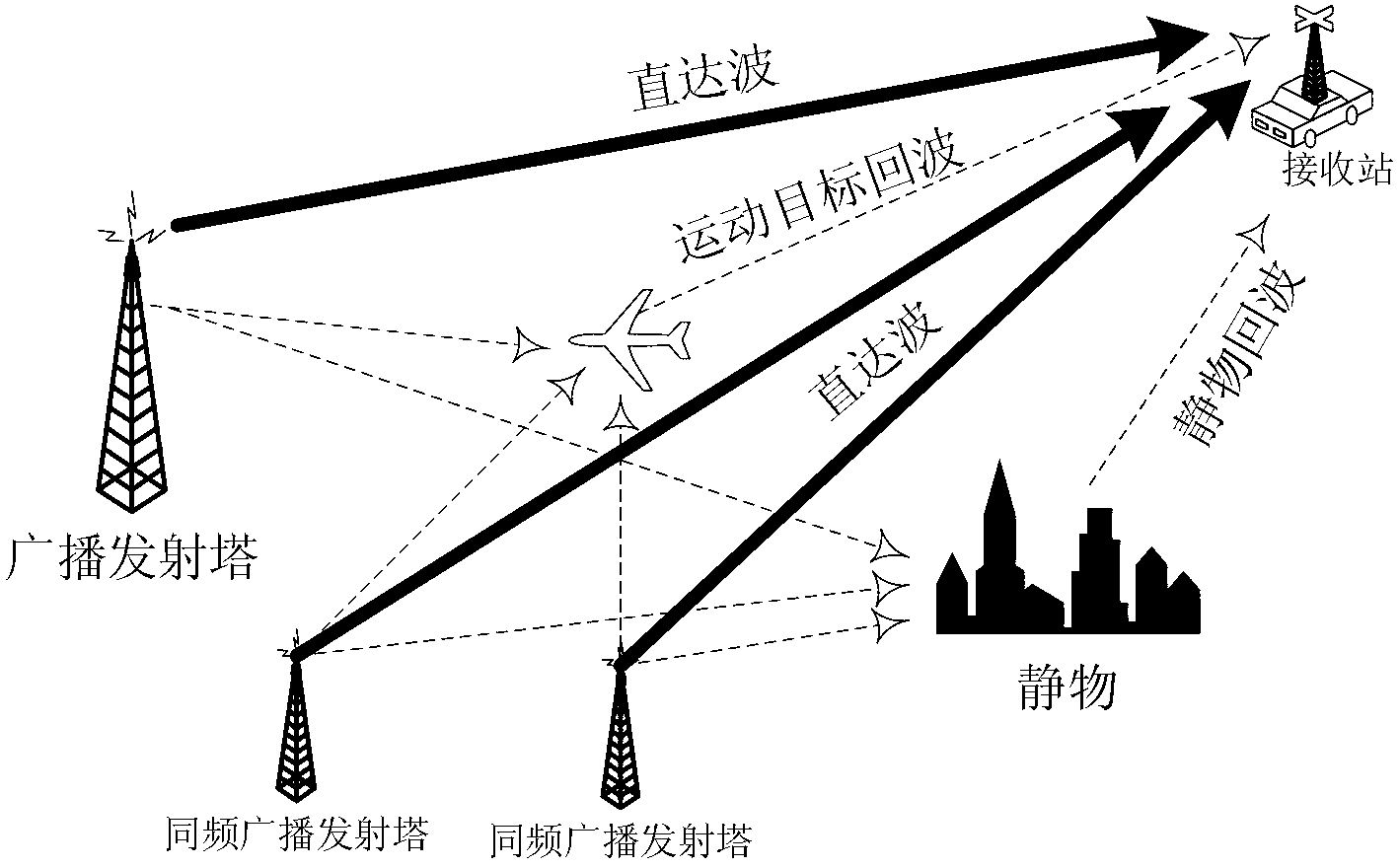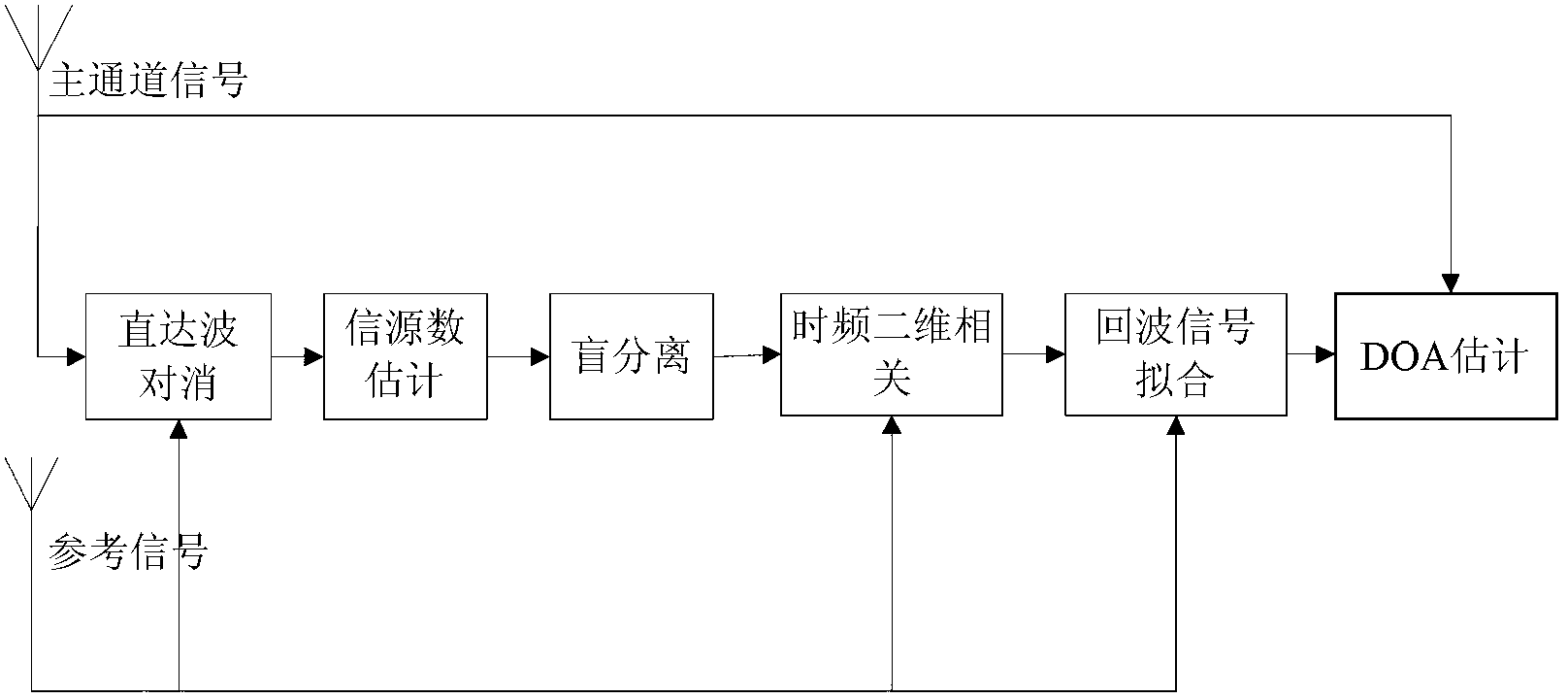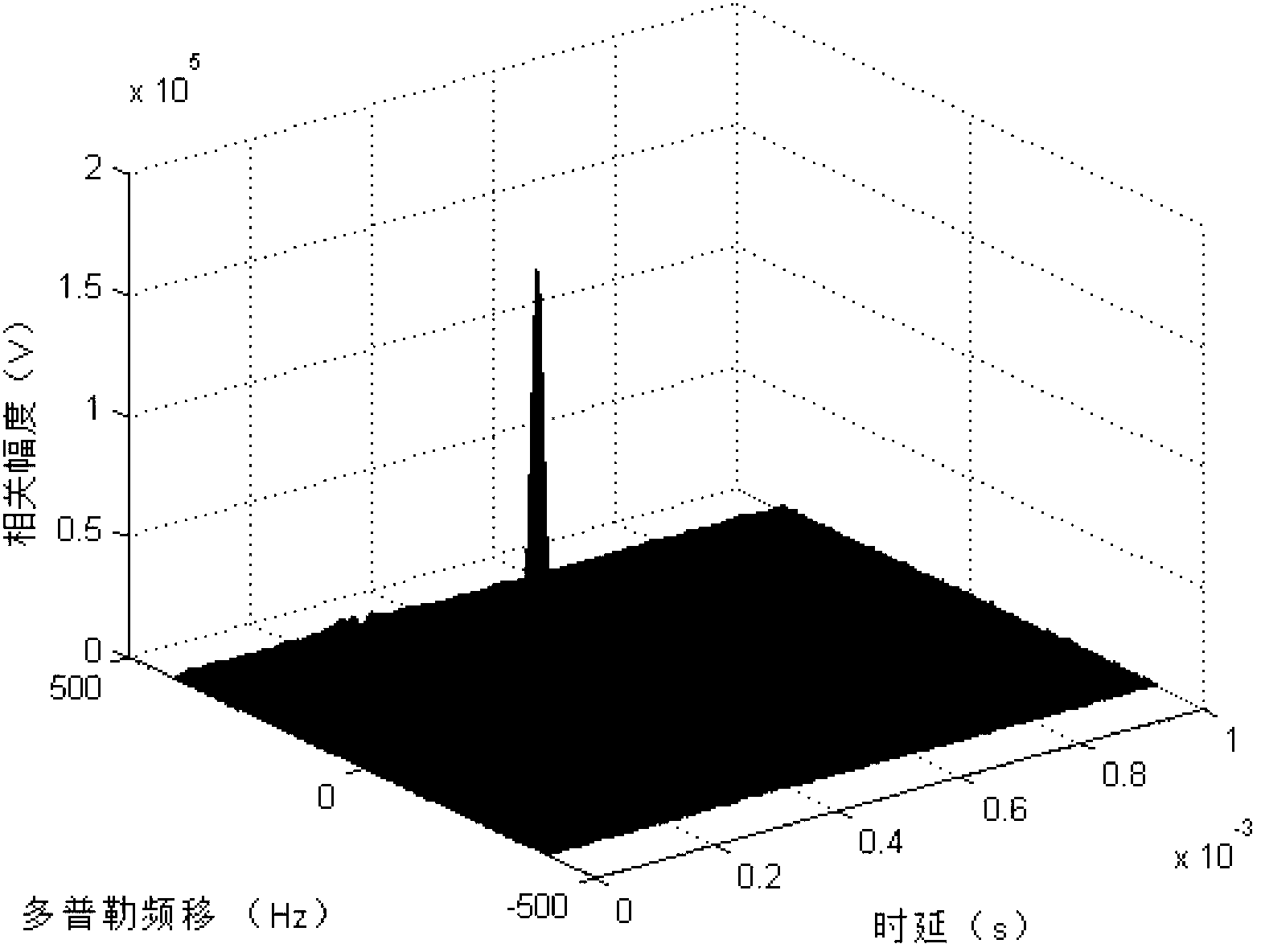Method for estimating weak signal separation on basis of positioning for external radiation sources
A weak signal, external radiation source technology, applied in the field of signal processing, can solve problems such as inability to estimate, and achieve the effect of positioning and tracking
- Summary
- Abstract
- Description
- Claims
- Application Information
AI Technical Summary
Problems solved by technology
Method used
Image
Examples
Embodiment Construction
[0022] The signal processing flow is as figure 2 Shown:
[0023] Step 1: The receiver performs band-pass sampling on the main channel array modulation signal to be processed and the modulation signal received by the reference antenna to obtain the main channel sampling sequence x(t) and reference sampling sequence s ref (t), wherein t represents the sampling moment, and the sampling length is L;
[0024] Step 2: For the main channel sampling sequence x(t), use the normalized least mean squares NLMS to implement direct wave and multipath cancellation to obtain the output signal output signal y NLMS (t); Direct wave and multipath cancellation are well-known techniques in the existing same-frequency interference signal suppression method, and are not repeated here;
[0025] Step 3: Use Akaike information criterion AIC or minimum description length MDL criterion to output signal y NLMS (t) Estimating the number of source signals, estimating the number M of source signals, and ...
PUM
 Login to View More
Login to View More Abstract
Description
Claims
Application Information
 Login to View More
Login to View More - R&D
- Intellectual Property
- Life Sciences
- Materials
- Tech Scout
- Unparalleled Data Quality
- Higher Quality Content
- 60% Fewer Hallucinations
Browse by: Latest US Patents, China's latest patents, Technical Efficacy Thesaurus, Application Domain, Technology Topic, Popular Technical Reports.
© 2025 PatSnap. All rights reserved.Legal|Privacy policy|Modern Slavery Act Transparency Statement|Sitemap|About US| Contact US: help@patsnap.com



